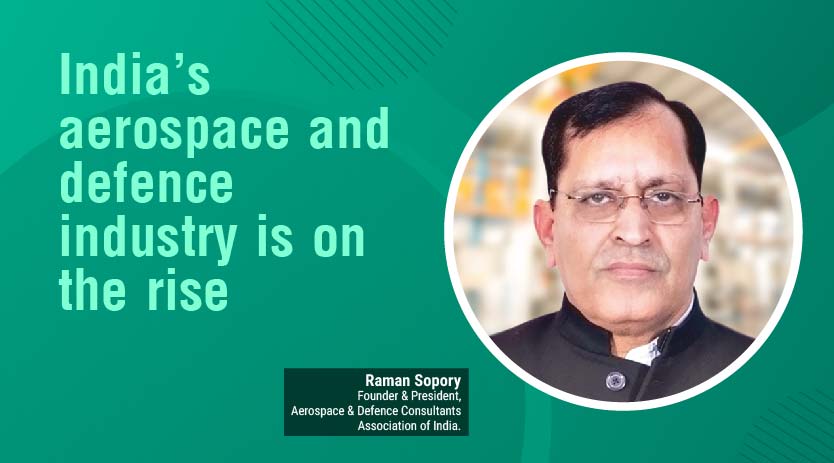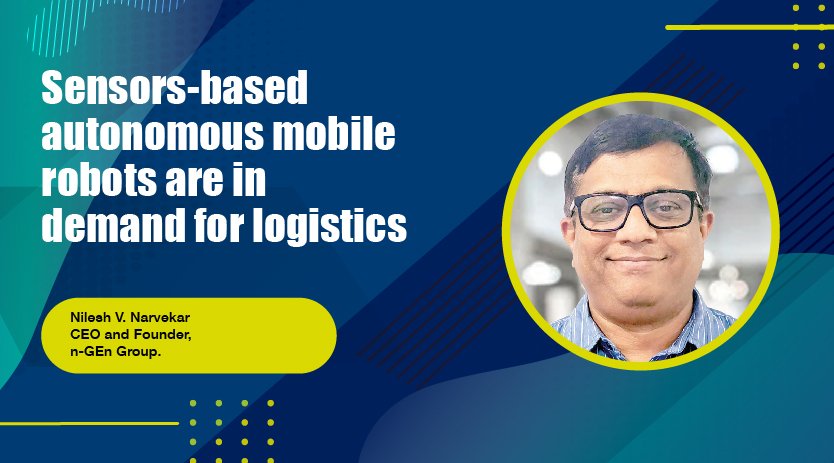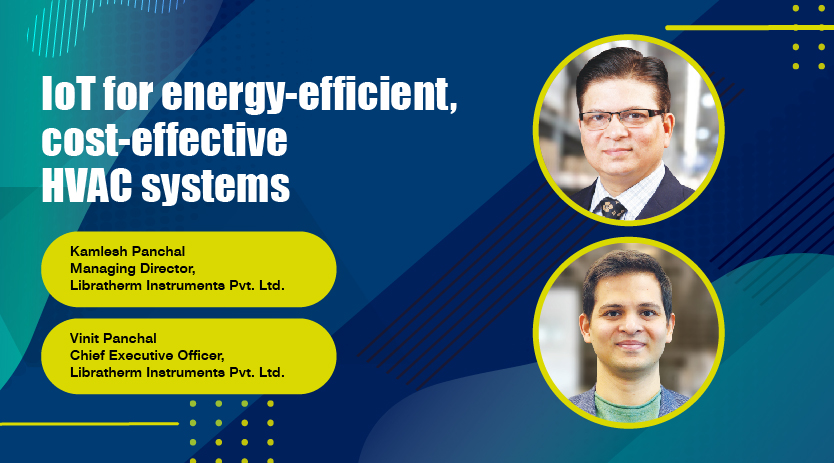Safety and traceability of batteries increases the manufacturing costs for OEMs
February 1, 2022 5:42 pm
One of the ways to make EVs more affordable is to reduce the battery development costs.
What is your perception about the electrification outlook for the Indian auto industry?
Albeit at its nascent stage, electrification of the auto industry is spearheading the opportunity to bring in the next generation of vehicles in India, led by the EV fleet. A report by India Energy Storage Alliance (IESA) projects that the Indian EV market will grow at a CAGR of 36 percent and the EV battery market will grow at a CAGR of 30 percent until 2026. This anticipated growth rate foretells the radical developments and maturation for the Indian auto industry, and I have solid optimism here.
There are two reasons behind the significant interest in electrifying the Indian auto industry- one with growing consciousness towards the environment amongst the citizens; and second, the impetus from the Government, be it through the FAME scheme or the Vehicle Scrappage Policy. Further, several state governments have also announced electrifying their public transportation which is making the field lucrative.
As the demand continues to pick up, the readiness of the industry to develop, design and locally manufacture components including motor, battery and power electronics, in India will be critical. There are three key aspects to reduce inefficiencies and expediting go-to-market, which Dassault Systèmes is focusing on:
- Digital simulation that can accelerate electric vehicle development by virtually integrating critical subsystems to predict the performance of the vehicle, before physical prototypes are built.
- Leveraging multi-physics simulation to predict and verify the electric drive system performance, whilst simultaneously taking into account thermal and mechanical requirements, electromagnetic performance, durability, noise and vibration control, as well as lubrication.
- Design an electric vehicle battery module and pack that exceeds performance targets by ensuring a well balanced design in terms of thermal management, strength and durability, safety, and thermo-electrical losses.
Emerging technology trends in electric mobility and its manufacturing competitiveness Bringing in the new generation of cars requires new vehicle innovators, OEM leaders and suppliers to rethink the way vehicles and infrastructure are conceptualised, engineered, tested, manufactured and sold.
Since India is accelerating EV adoption, technology can build and deploy these capacities in the fastest time. There is a huge potential for EV OEMs to deploy Virtual Twin technologies, which help them to not only visualise the product they are building, but also analyse what-if scenarios, and help in modelling the future product. Virtual twins have a long history in automotive applications and it is estimated that by 2020, 65 percent of automotive manufacturers will use simulation and virtual twins to operate products and assets. Further, case studies suggest that virtual twin technologies accelerate time-to-market and help bring costs down for new drivetrains, lightweight body designs and EV batteries, and are indispensable in the development of autonomous transportation.
By leveraging simulation capabilities, OEMs can test vehicles for safety; for example, run simulations to determine durability of the components; or analyse the thermal aspects of the battery for performance and safety. By creating a virtual twin of the vehicle, or components, OEMs can create multiple variations to identify one that optimises all requirements before mass manufacturing and perform trade off studies.
Some of the benefits of using these technologies could include,
- Accelerate optimal innovation including systems, mechatronics and electrical engineering
- Create and validate better innovations and help you develop indigenous technology
- Boost efficiencies and reduce time-to-market
- Convince investors and decision makers with high-end marketing communication of the future product.
What are Dassault Systèmes’ offerings for automobile manufacturing sectors?
With our 3DEXPERIENCE platform, Dassault Systèmes brings an effective development platform that integrates all EV engineering disciplines and provides strategic performance insights in a holistic way. Hence, 3DEXPERIENCE platform has emerged as the standout choice to develop electric mobility in both passenger and commercial vehicle segments, and has especially been helpful to the new age of young and purposeful enterprises that are committed to solving the mobility challenges.
By using Dassault Systèmes’ SIMULIA and CATIA applications, powered by 3DEXPERIENCE platform, automotive engineers are designing and developing the exterior profile as well as the digital mock-ups of the products, which assists in improving performance and goto-market readiness. In 2021, Bangalore-based electric vehicle (EV) startup, Simple Energy launched Simple Mark 2 with an improved range of 240km on a single charge and a top speed of 100kph, designed completely on Dassault Systèmes’ development platform. They were able to unveil the upgraded version within six months of launching Mark 1 in November 2020.
Our Electro Mobility Accelerator solutions provide industry-proven capabilities to germinate new mobility services concepts, explore regional options, virtually simulate and validate performance, all on one secure, powerful platform. Global industry leaders rely on our 3DEXPERIENCE platform cloud-based (and on premise) applications to capture and assess social media intelligence, analyse market demand, then develop and deliver customer-preferred innovations to market, faster and more efficiently than their global competitors.
For example, NIO, the American EV maker took just 3 years to develop their full vehicle after they adopted Dassault Systèmes’ 3DEXPERIENCE platform which helped them to streamline their new product development process and connect all information flows, integrating product data, bill of materials (BOM) data, manufacturing data and even partner data on a single platform to enable seamless sharing.
In reference to governmental incentive programs, can the PLI scheme boost the market for EV segment?
Safety and traceability of batteries increases the manufacturing costs for OEMs. So, one of the ways to make EVs more affordable, is to reduce the battery development costs. Here, the role of the PLI scheme from the Indian government is also critical as it is incentivizing battery development and cell manufacturing in India. We are already seeing investments from Asian, Korean and Japanese battery companies in India while the opportunity to develop the Indian ecosystem for battery value chain matures. One of the most intriguing and complex manufacturing domains today is battery cell technology. It is an amazing mix of rapidly evolving supply chains, constrained resources, product innovation and global and startup companies competing for market-share.
Virtual twin experience capabilities have been used extensively in many industries as they provide the unique ability to simulate all aspects of manufacturing. From plant and line layout to process and manufacturing engineering, manufacturers can mitigate the risk of real world consequences by experimenting with digital models of products, processes and resources. It also incorporates a closed loop process that connects internal silos of design, engineering and production while collecting data from the real world to drive continuous improvement.
Without technology such as the virtual twin experience, battery cell manufacturing can be a challenging proposition for both startups and seasoned organisations. Achieving operational excellence can provide significant benefits through: reduced costs from more efficient operations and reducing time to market by eliminating internal silos along with continuous improvement through analysis and 3D visualisation.
3DEXPERIENCE platform helps all participants along the battery value chain to accelerate and de-risk their efforts for better, more profitable and sustainable energy.
Will the auto component industry’s revenue return to pre pandemic levels?
Well, with rising demand of EV and high-value component sales to high-end cars, the auto component industry is expected to grow. According to ACMA, the first quarter of 2022 shows promise and if no major downfall happens, auto parts industry may hit an all-time high revenue from exports in FY 22, component makers can reach closer to peak business of 57.1 billion for FY 21-22.
Cookie Consent
We use cookies to personalize your experience. By continuing to visit this website you agree to our Terms & Conditions, Privacy Policy and Cookie Policy.

















 English
English Hindi
Hindi